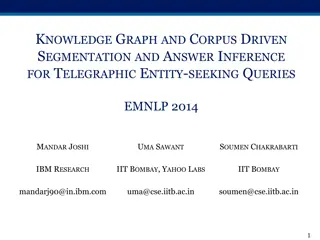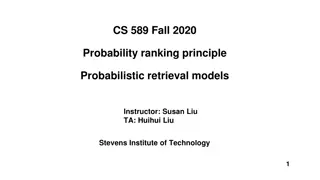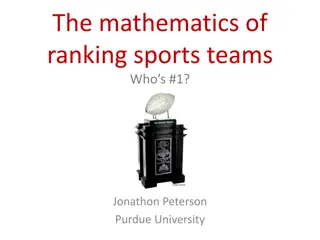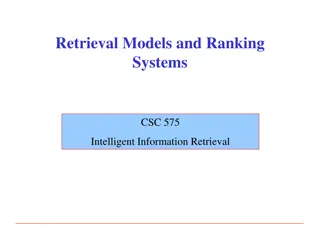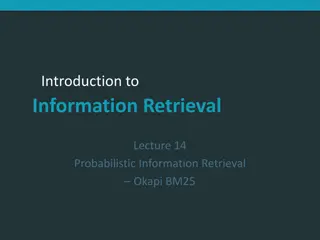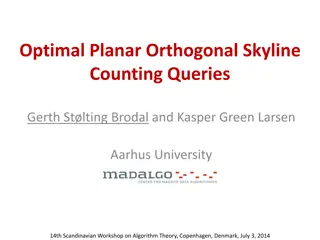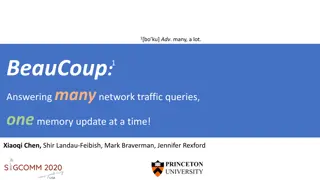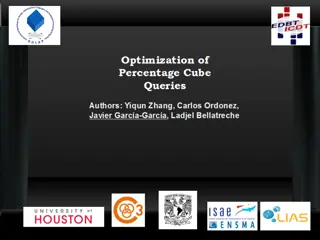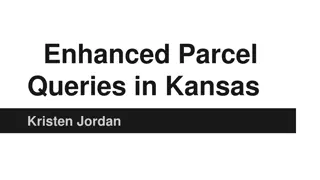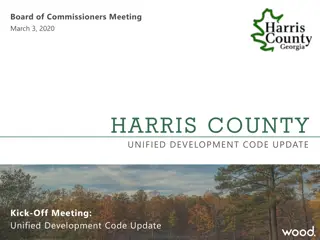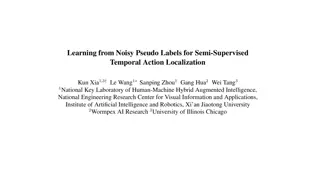Unified Framework for Efficient Ranking-Related Queries Processing
The research paper discusses a unified framework focusing on efficiently processing ranking-related queries. It covers dual mapping and ranking, k-lower envelope usage in ranking, top-k queries solutions, and applications like identifying user preferences. The study showcases algorithms, experimental results, and future work considerations.
Download Presentation

Please find below an Image/Link to download the presentation.
The content on the website is provided AS IS for your information and personal use only. It may not be sold, licensed, or shared on other websites without obtaining consent from the author. Download presentation by click this link. If you encounter any issues during the download, it is possible that the publisher has removed the file from their server.
E N D
Presentation Transcript
A Unified Framework for Efficiently Processing Ranking Related Queries Muhammad Aamir Cheema1, Zhitao Shen2, Xuemin Lin2, Wenjie Zhang2 1 Monash University, Australia 2 University of New South Wales, Australia
Outline Dual mapping and ranking K-lower envelope and its application in ranking Our contributions Highlights of our algorithms Experimental results Conclusions and future work Slide # 2
Dual mapping and ranking Given a point a=(u,v) and a weighting vector W=(w1, w2), a.score = u*w1 + v*w2 A point a=(u,v) is mapped to a line a*: y=ux + v in dual The weighting vector W=(w1, w2) is mapped to a vertical line W*: x=w1/w2 The intersection of a* and w* is the point where y= u(w1/w2)+ v = (u*w1 +v*w2))/w2 W*: x = w1/ w2 b* yb= b.score/w2 a a* b ya= a.score/w2 Primal Dual Slide # 3
Ranking in dual space Example Query: Given a weighted vector W=(w1,w2), return k objects with smallest scores Solution: Map W and all the objects to dual space Return k lowest lines intersecting W* Rank Rank W*: x = w1/ w2 W*: x = w3/ w4 c 1. a 1. d d 2. b 2. b a 2 3. c 3. a 1 b 4. d 4. c Primal Dual Slide # 4
k-lower envelope Given a set of lines L, mass of a point p is the number of lines that lie strictly below p k-lower envelope consists of every point p that lies on one of the lines in L and has mass equal to k-1. 2-lower envelope p p Slide # 5
k-lower envelope and ranking Top-k queries: Any top-k query involving any linear scoring function can be answered using k-lower envelope. c d a b Primal Dual Slide # 6
k-lower envelope and ranking Reverse top-k query: Given an object q, return the set of weighted vectors for which q is one of the top-k objects. Applications: Identify the users that may prefer the product q Solution: Compute the intersection between q* and k-lower envelope W*: x = w1/ w2 c d a q b Primal Dual Slide # 7
k-lower envelope and ranking k-snippet: Return all valuable objects where an object o is called valuable if it is among top-k objects for at least one scoring function Applications: A data summary such that every top-m (m k) query can be answered using this summary. Solution: Return objects that lie on or below k-lower envelope f e c d a b Primal Dual Slide # 8
k-lower envelope and other applications k-depth contour: Return an area such that an object o is valuable if and only if o is outside this area Ranking Outlier detection Reverse k furthest neighbors And more Voronoi-diagrams Half-space range searching and more Slide # 9
Our contributions Existing algorithms to compute k-lower envelope assume data can fit in main memory are index-agnostic We propose two efficient index-aware secondary memory algorithms SkyRider I/O and CPU efficient algorithm KnightRider I/O optimal As a result of above, we are able to compute k-snippet (I/O optimal) k-depth contour (I/O optimal when node size > k) Reverse top-k query (up to two orders of magnitude better than state-of-the-art) Slide # 11
Rider: The Basic Idea Start from the left most point on k-lower envelope (always move towards right) Upon reaching an intersection Make a turn (i.e., leave the current road) The path travelled is the k-lower envelope c d a b Primal Dual Slide # 12
Implementing Rider Start from the left most point on k-lower envelope (always move towards right) Upon reaching an intersection Line with k-th largest slope. Make a turn (i.e., leave the current road) i.e., point in primal with k-th largest x-value The path travelled is the k-lower envelope c d a A point (u,v) in primal is mapped to a line y=ux+v b Primal Dual Slide # 13
SkyRider: An I/O efficient version of Rider Main observation: Only the points in primal space that are among k-skyband points are required to compute k-lower envelope Algorithm: Compute k-skyband using BBS Run Rider on k-skyband Slide # 14
KnightRider: An I/O optimal algorithm Must-first paradigm without accessing it. An entry is called a must entry, if the correctness cannot be guaranteed Algorithm Insert root node of R-tree in Q While Q is not empty Access the entries in Q Compute two approximations of k-lower envelope using accessed entries Q the unaccessed must entries Return k-lower envelope Slide # 15
Experiments: Data Real data 5 Million POIs on the road network of California Each POI has two attributes: distance to nearest beach, distance to nearest airport Synthetic data Slide # 16
Experiments: Competitors BELT [H. Edelsbrunner and E. Welzl, Constructing belts in two dimensional arrangements with applications, SIAM J. Comput., 1986] FDC [T. Johnson, I. Kwok, and R. T. Ng, Fast computation of 2-dimensional depth contours, in KDD, 1998] FDC-Index (same as FDC but uses Index for computing convex hull) Slide # 17
Experiments: Results Effect of data size Slide # 18
Experiments: Results Effect of k Slide # 19
Experiments: Results Effect of data distribution Slide # 20
Experiments: Results Reverse top-k queries MRTopK [A. Vlachou, C. Doulkeridis, Y. Kotidis, and K. N rv g, Reverse top-k queries, in ICDE, 2010] Slide # 21
Conclusions and Future Work Contributions First to study index-aware algorithm for k-lower envelope with applications in ranking related queries Propose two efficient algorithms SkyRider and KinghtRider Proof of I/O optimality Algorithms are extendible to higher dimensionality Future work Propose approximate but efficient algorithms for higher dimensionality Slide # 22
aamir.cheema@monash.edu http://users.monash.edu.au/~aamirc Twitter handle: @cheema154 Presented by Muhammad Aamir Cheema Slide # 23

 undefined
undefined





